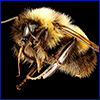The Neighborhood Gardener – May

Happy Gardening!
Boniato
 As the temperatures rise, many gardeners seek out ways to avoid working in their gardens, but for others, there's no end to the gardening season. And this type of gardener laments the lack of edibles that can be grown in Florida's warmest months. If you happen to be one such gardener, consider growing boniato. A member of the morning glory family, boniato is a tuber with the appearance and taste somewhere between a sweet potato and a baking potato. More
As the temperatures rise, many gardeners seek out ways to avoid working in their gardens, but for others, there's no end to the gardening season. And this type of gardener laments the lack of edibles that can be grown in Florida's warmest months. If you happen to be one such gardener, consider growing boniato. A member of the morning glory family, boniato is a tuber with the appearance and taste somewhere between a sweet potato and a baking potato. More
Hangin' out in a Basket
 Hanging baskets are a great way to elevate the colors in your garden to new heights—eye level, to be specific. They're ideal for people living in condos, apartments, or any place with limited to no gardening space. Pam Brown, a retired urban horticulture agent with UF/IFAS Extension Pinellas County shares her "secrets to success" on gardening with hanging baskets. More
Hanging baskets are a great way to elevate the colors in your garden to new heights—eye level, to be specific. They're ideal for people living in condos, apartments, or any place with limited to no gardening space. Pam Brown, a retired urban horticulture agent with UF/IFAS Extension Pinellas County shares her "secrets to success" on gardening with hanging baskets. More
Wendy's Wanderings
 I was only going to work in the yard for a few minutes; that's why I was wearing flip flops. Three hours later, an unproductive fig tree had been pruned to the ground and my brand-new folding saw had been properly broken in. I stepped away from the project satisfied that the fig was going to come back in a few months and maybe have a new outlook on life. What I didn't know was that within 24 hours, I would experience the fig's wrath. More
I was only going to work in the yard for a few minutes; that's why I was wearing flip flops. Three hours later, an unproductive fig tree had been pruned to the ground and my brand-new folding saw had been properly broken in. I stepped away from the project satisfied that the fig was going to come back in a few months and maybe have a new outlook on life. What I didn't know was that within 24 hours, I would experience the fig's wrath. More
Plant of the Month: Stokes' Aster
 Stokes' aster is a lovely flowering native that requires almost no maintenance. For your lack of work tending this plant you'll find yourself rewarded with showy flowers and evergreen foliage. Who doesn't love a plant that looks fabulous with little effort? Attractive to both bees and butterflies, Stokes' aster flowers are normally blue-lilac, but cultivars in other colors are available. This perennial does best in zones 8 through 9A. More
Stokes' aster is a lovely flowering native that requires almost no maintenance. For your lack of work tending this plant you'll find yourself rewarded with showy flowers and evergreen foliage. Who doesn't love a plant that looks fabulous with little effort? Attractive to both bees and butterflies, Stokes' aster flowers are normally blue-lilac, but cultivars in other colors are available. This perennial does best in zones 8 through 9A. More
Bumblebee in Peril
 We're all concerned about the declining honey bee populations, but let's not forget about the bumblebees. January saw a first for a species of bumblebee in the United States, and not a good first. The U.S. Fish and Wildlife Service declared that the once-common rusty patched bumblebee (Bombus affinis) is now endangered. They cite a number of factors leading to the staggering 87 percent decline in population, including loss of habitat, diseases and parasites, pesticides, and climate change.
Read more at the U.S. Fish & Wildlife Service website.
We're all concerned about the declining honey bee populations, but let's not forget about the bumblebees. January saw a first for a species of bumblebee in the United States, and not a good first. The U.S. Fish and Wildlife Service declared that the once-common rusty patched bumblebee (Bombus affinis) is now endangered. They cite a number of factors leading to the staggering 87 percent decline in population, including loss of habitat, diseases and parasites, pesticides, and climate change.
Read more at the U.S. Fish & Wildlife Service website.
Last Month of Flower and Garden Festival
 Even the heat can't stop the Epcot International Flower and Garden Festival! The festival features fun Disney-themed topiaries, gorgeous gardens, and special events in the Festival Center on Fridays, Saturdays, and Sundays, including instructional seminars from University of Florida experts. May's seminars include Beautiful and Easy Houseplants, Bee Abodes and Florida-Friendly Landscapes, and Orchids. Visit the Epcot International Flower and Garden Festival website.
Even the heat can't stop the Epcot International Flower and Garden Festival! The festival features fun Disney-themed topiaries, gorgeous gardens, and special events in the Festival Center on Fridays, Saturdays, and Sundays, including instructional seminars from University of Florida experts. May's seminars include Beautiful and Easy Houseplants, Bee Abodes and Florida-Friendly Landscapes, and Orchids. Visit the Epcot International Flower and Garden Festival website.
May in Your Garden
 While summer may not officially come until the middle of June, in Florida May is the month to prepare for the heat (and hopefully the rain). Plant heat-loving herbs—there are quite a few to choose from! Mexican tarragon, basil, ginger, cumin, summer savory, and rosemary make aromatic and flavorful additions to your garden.
While summer may not officially come until the middle of June, in Florida May is the month to prepare for the heat (and hopefully the rain). Plant heat-loving herbs—there are quite a few to choose from! Mexican tarragon, basil, ginger, cumin, summer savory, and rosemary make aromatic and flavorful additions to your garden.
For more month-by-month gardening tips, check out the Florida Gardening Calendar. Three different editions of the calendar provide specific tips for each of Florida's gardening regions—North, Central, and South.
Rabbits
 Most people love seeing bunnies in the landscape, but they may not realize that rabbits could be responsible for damaged or missing plants in the garden. While you may welcome their cute little tails and twitchy ears, their voracious feeding can really take a toll on your plants. Rabbits feed on the tender shoots of young plants, and can even eat whole seedlings, leaving you wondering, "Didn't I plant a whole row of veggies?" The best management is deterrence, and we've got a few suggestions on making your garden less attractive to these adorable little pests. More
Most people love seeing bunnies in the landscape, but they may not realize that rabbits could be responsible for damaged or missing plants in the garden. While you may welcome their cute little tails and twitchy ears, their voracious feeding can really take a toll on your plants. Rabbits feed on the tender shoots of young plants, and can even eat whole seedlings, leaving you wondering, "Didn't I plant a whole row of veggies?" The best management is deterrence, and we've got a few suggestions on making your garden less attractive to these adorable little pests. More
What's Going On?
If your Master Gardener program or Extension office is having an event, be sure to share it with us.

